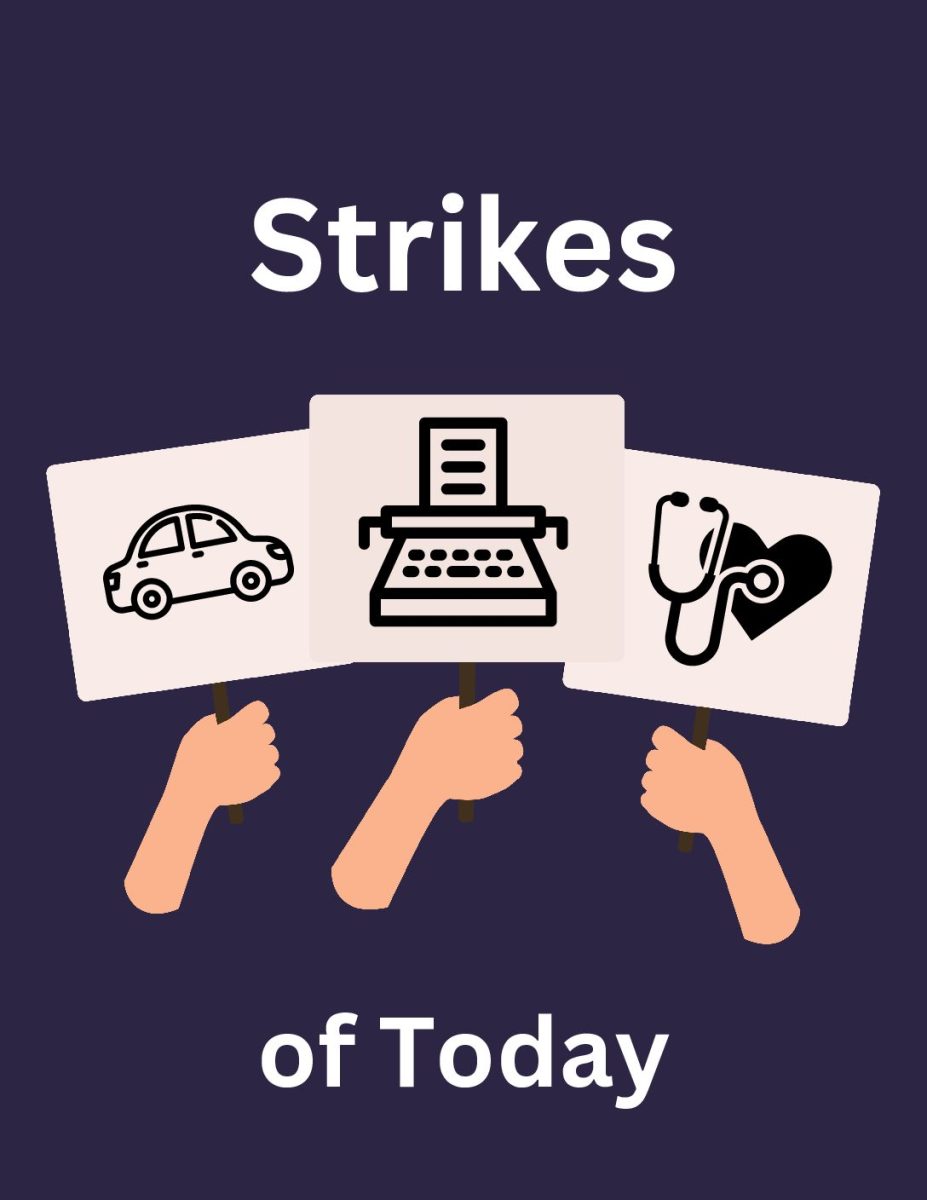We’ve all heard in the news that there are strikes on strikes going on in the working world. But what is a strike? The Cambridge Dictionary describes it as “to refuse to continue working because of an argument with an employer about working conditions, pay levels, or job cuts”.
As of now, there are three strikes going on in the United States workforce. The writer’s strikes, the auto workers strike, and the latest health care worker’s strike.
Writers Strike
A little fun fact: this writer’s strike is the first Hollywood strike since 2007. The strike is centered around the Writers Guild, which meets every three years to negotiate contracts with Hollywood Studios. This year’s concerns are centered around artificial intelligence (AI) and how it could possibly affect the writer’s credits and compensations.
The writers have come together to ask for there to be “guardrails” for insurance that the AI would not affect them. Besides asking for protection against the rise of AI, they also talked about the harmful working conditions within Hollywood. Writers who work in the ever-expanding world of streaming platforms are the most vocal about this issue. They have voiced their unhappiness with the little payment these writers receive and in return, the Guild as a whole responded by adding residual pay to the list of changes they want made to the entertainment industry.
Studios have shown their reluctance to agree with the new changes being proposed, with their main claims being about the fluctuating market and loans these studios have acquired.
The strike has come to a “tentative” deal, which has addressed some of the requests the Guild has made. They agreed to an increase in payments but have yet to talk about the use of AI, which has continued to worry members of the Guild.
Auto Workers Strike
The United Auto Workers (UAW) have also gone on strike against some of the biggest automakers in the US. Big companies such as General Motors, Ford, and Stellantis have come under fire for unfair wages to their workers.
This strike has been confusing to many and has been described in a variety of ways by different news companies. According to Texas A&M Today, the reason for the strike is described as “The fact that UAW has made major long-term concessions to help the Big Three automakers make it through challenging times without any efforts by those companies to now return some of those benefits.”
As a result, auto workers are now asking for a 40% increase in salary, a return cost of living adjustment, and another return on benefits that were put on hold about 15 years ago.
Many have asked the question “How will this affect me?” Fewer workers means less product, which will lower the number of cars seen at dealerships, and increase the average cost of a car. So for the kids hoping their parents would get them a car for their birthday or Christmas, you’re likely out of luck. However, these major companies have built up inventories of their vehicles, so major changes aren’t expected to happen quickly.
Healthcare Workers Strike
This is the latest of strikes, so it’s not heavily advertised. Stations such as NPR have covered it and gone over its known details. Though this strike isn’t heavily advertised, it has the power to impact the lives of nearly 13 million Americans.
According to a CNN article, healthcare workers, specifically in the states of California, Colorado, Washington, Oregon, Washington D.C., and Virginia are going on a three-day strike. 75000 Kaiser workers started walking out, protesting against healthcare worker shortages, which affected their paychecks. Specifically, it affects eye doctors due to their understaffing, it takes three months to get an appointment.
This strike isn’t just to benefit the healthcare workers, but to demonstrate how dangerous it is for patients because of understaffing.
Yesterday was the end of the strike, but Kaiser said it has agreed to do “aggressive work” to hire more staff members and said it has hired 10,086 people in union-represented jobs so far this year. Now after the strike, Kaiser will raise their prices to attract more workers and is offering a “wage increase of 5% in the first three years of a new contract, and a 4% raise in the final year to all unionized employees”. This offer is not accepted and the percent increase being requested is a 6.5% increase in the first two years of the contract and 5.75% for the final two years, and asked for 24 dollars per hour in the new year, which was not accepted.



